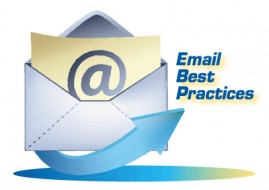Careless Keystrokes & Bad Decisions: New York Law on Inadvertent Disclosure (Part 2)
By Robert A. Barrer
inadvertent
adjective: in·ad·ver·tent \-tənt\
Merriam-Webster definition: not intended or planned
In Part 1 of this article, which appeared in last month’s issue of New York Legal Ethics Reporter, we discussed the dilemmas lawyers face when confronted with the inadvertent disclosure of privileged documents, a dilemma equally troubling whether the lawyer is the sender or recipient of those documents. Our focus last month was on RPC 4.4(b), the ethics rule which addresses this problem, and the more recent ethics opinions which have attempted a sea change in the guidance to lawyers in this area.
This month, in Part 2, we will drill even deeper, focusing on how courts address this problem in the real world of civil and criminal discovery. We will then provide detailed guidelines to both senders and recipients of inadvertently disclosed privileged material on how to comply with the ethics rules, civil discovery obligations and duties to clients.
Selected Court Decisions
The voluntary disclosure of a document protected by the attorney-client privilege ordinarily serves to waive any claim of privilege as to that document. New York Times Newspaper Div. v. Lehrer McGovern Bovis, Inc., 300 A.D.2d 169, 752 N.Y.S.2d 642 (1st Dept. 2002) (disclosure of a privileged document generally operates as a waiver of the privilege unless it is shown that the client intended to maintain the confidentiality of the document, that reasonable steps were taken to prevent disclosure, that the party asserting the privilege acted promptly after discovering the disclosure to remedy the situation, and that the parties who received the documents will not suffer undue prejudice if a protective order against use of the document is issued). See also United States v. Rigas, 281 F. Supp. 2d 733, 737 (S.D.N.Y. 2003).
When dealing with inadvertent disclosure issues, many courts use the factors listed in Lois Sportswear, U.S.A., Inc. v. Levi Strauss & Co., 104 F.R.D. 103 (S.D.N.Y. 1985) to determine whether a waiver has occurred. The factors include: the reasonableness of the precautions to prevent inadvertent disclosure, the time taken to rectify the error, the scope of the discovery, the extent of the disclosure and an overreaching issue of fairness. Id. at 105. See also BNP Paribas Mortg. Corp. v. Bank of Am., N.A., 2013 U.S. Dist. LEXIS 75402 (S.D.N.Y. Mar. 7, 2013) (the case includes a lengthy analysis of the Lois Sportswear factors).
In Stinson v. City of New York, 2014 U.S. Dist. LEXIS 145612 (S.D.N.Y. Oct. 10, 2014), the Court, following Fed. R. Evid. 502(b) and Fed. R. Civ. P. 26(b)(5)(B), held that documents inadvertently produced by the NYC Law Department (a CD containing NYC Police Department Briefing and Topic Books) must be returned and the information not used by the receiving counsel. In this instance, success in rectifying the situation was due to the immediate steps taken by the sending counsel to “claw back” the documents after the inadvertent disclosure was discovered including the assertion that the information provided was privileged.
In Massey v. Anand, 2012 N.Y. Misc. LEXIS 2945 (Sup. Ct., Suffolk Cty, May 10, 2012), the Court found a clear violation of RPC 4.4(b) where an attorney who received an unredacted expert affidavit in a medical malpractice action did not notify the sender of the inadvertent disclosure and actually utilized it to prepare opposition papers to a summary judgment motion. As a result, the Court scheduled a conference to discuss available remedies for the breach of the RPC 4.4(b) obligation including sanctions, disqualification and possible reference to the Grievance Committee.
In MNT Sales LLC v. Acme Television Holdings, LLC, Index No. 602156-2009 (Sup. Ct., N.Y. Cty., April 14, 2010), the attorney for the defendant inadvertently included an attachment in an email message to the attorney for the plaintiff and, upon realizing the mistake, requested that the attachment and all copies be destroyed. Plaintiff’s attorney ignored the request and moved, three months later, for an order permitting use of the inadvertently disclosed document. The Court, citing Assn. of the Bar of the City of New York Comm. on Prof. & Jud. Ethics Formal Op. 2003-4 (2003), called the conduct of plaintiff’s attorney “egregious” and precluded use of the inadvertently disclosed document.
Court Rules
A number of court rules address issues related to inadvertent disclosure and privilege. The following summarizes the pertinent provisions in select rules.
Fed. R. Civ. P. 26(b)(5)(B)
Information Produced. If information produced in discovery is subject to a claim of privilege or of protection as trial-preparation material, the party making the claim may notify any party that received the information of the claim and the basis for it. After being notified, a party must promptly return, sequester, or destroy the specified information and any copies it has; must not use or disclose the information until the claim is resolved; must take reasonable steps to retrieve the information if the party disclosed it before being notified; and may promptly present the information to the court under seal for a determination of the claim. The producing party must preserve the information until the claim is resolved.
Fed. R. Evid. Rule 502
The following provisions apply, in the circumstances set out, to disclosure of a communication or information covered by the attorney-client privilege or work-product protection.
(b) Inadvertent Disclosure. When made in a federal proceeding or to a federal office or agency, the disclosure does not operate as a waiver in a federal or state proceeding if:
(1) the disclosure is inadvertent;
(2) the holder of the privilege or protection took reasonable steps to prevent disclosure; and
(3) the holder promptly took reasonable steps to rectify the error, including (if applicable) following Federal Rule of Civil Procedure 26 (b)(5)(B).
Dealing with Fed. R. Civ. P. 26(b)(5)(B) and Fed. R. Evid. 502 in complex litigation is a subject that is worthy of a separate article and I recommend M. Dale and J. Kay, New Strategies to Protect Privileged Documents from Inadvertent Disclosure, N.Y. Law Journal (Oct. 5, 2015). Suffice it to say that anyone litigating the complex case should be intimately familiar with these rules and should employ careful privilege review procedures and include “claw back” provisions in any discovery plan and protective order issued to govern discovery in that case.
Immediate Response to RECEIVING an Inadvertent Disclosure
1. Wipe the smile off your face and consider that it could be you in the same situation.
2. Stop reading, take a deep breath and think.
3. Do not copy or retransmit the disclosure.
4. Consult with a trusted colleague or your firm’s ethics counsel, preferably in person or by telephone.
5. Notify the sender.
6. If you have not reviewed the information, you are sure that the transmission was inadvertent and there was no intent or arguable basis to suggest a privilege waiver, delete the message or return the document without retaining a copy.
7. If there is an arguable basis to believe that there was a privilege waiver, consider an application for judicial guidance establishing a waiver of privilege or confirming that a waiver has not occurred.
8. Consider a report to disciplinary authorities if misconduct is disclosed.
Immediate Response to MAKING an Inadvertent Disclosure
1. Take a deep breath and think.
2. Take immediate steps (at your expense) to get the document or information back and confirm in writing that you requested that the document be returned or the email message deleted without further disclosure and copying.
3. Consult with a trusted colleague or your firm’s ethics counsel, preferably in person or by telephone.
4. If approved by a trusted colleague or your firm’s ethics counsel, notify the client what has transpired and what steps you have taken (at your expense) to rectify the situation. Candor is key.
5. Review your firm’s procedures to ensure that you are compliant with RPC 1.6(c)’s mandate to exercise reasonable care to ensure that the lawyer’s staff and associates do not make unauthorized disclosures of confidential information. In other words, check your office procedures to make sure that what occurred is an aberration rather than a systemic problem.
What Can Be Done?
1. You may be able to exploit the information if you receive it in your individual capacity as opposed to your representational capacity. See RPC Rule 4.4(b) (“[a] lawyer who receives a document relating to the representation of the lawyer’s client …”). As previously stated, however, some courts have held that RPC 4.4(b) applies to the “lawyer-litigant” because the “intent and purpose” of the rule deems a self-represented lawyer to be representing a client. See E. Bennett, E. Cohen and H. Gunnarsson, Annotated Model Rules of Professional Conduct, p. 471 (ABA Center for Prof. Resp. 8th Edition 2015).
2. You may be able to utilize the information if you review the information before realizing that it is privileged.
3. You can always consult with a court for a dispositive ruling on privilege waiver while preserving the information until the ruling is obtained.
Has There Been a Waiver of the Privilege That Can Be Exploited?
1. A lawyer is always free to consider the legal argument that there has been a waiver of a privilege.
2. There is no downside to seeking a ruling from the presiding court or a court of appropriate jurisdiction taking care to preserve the confidential information (e.g. by submitting the document in camera) until a dispositive ruling can be obtained.
Suggestions for Avoiding & Addressing Inadvertent Disclosure
The following suggestions come from my 2005 article in the New York State Bar Journal entitled Unintended Consequences, Avoiding and Addressing the Inadvertent Disclosure of Documents. These suggestions (which, surprisingly, required only slight modification) apply with the same force and effect as they did over 10 years ago.
1. Protect the confidences and secrets of your clients and make sure that your firm and all of its employees and staff have a clear understanding of the ethical rules governing the area.
2. Take steps to ensure that documents disclosed during the course of formal discovery are properly screened for client confidences and secrets and redacted where appropriate. Consider a formal protective order that specifically addresses the consequences of inadvertent disclosure.
3. Practice extreme caution in the transmission of documents by mail to ensure that materials are not misdirected and enclosures go to whom they are intended. Review all enclosures and match letters with envelopes to make sure that there are no mistakes. You may wish to consider a discussion with your staff about this subject which could include the creation of checklists and procedures to avoid inadvertent disclosure.
4. Practice extreme caution in the use of electronic mail. Do not allow your mail program to “auto fill” the name of a recipient; regardless, double check to make sure that the correct recipient is chosen.
5. Consider a scrubbing program to remove “metadata” from word processing programs before transmitting documents electronically. Better yet, send documents as digital images (for example a PDF file or a fax) to avoid disclosing confidential matters such as track changes or hidden comments. The use of digital images is excellent alternative to sending a document in a word processing program. However, some experts in the area have cautioned that metadata can be “mined” from these images as well.
6. The sender of inadvertently disclosed information must promptly notify the recipient that the disclosure has occurred and request that the information or documents be returned without further disclosure or copying; after discussing the matter with a trusted colleague or your firm’s ethics counsel, notify your client of the facts and your plan for correction. Explain to your client that your efforts will be undertaken at no cost to the client.
7. The sender of inadvertently disclosed information should take all steps necessary to rectify the problem including an application to the appropriate court or tribunal. If the inadvertent disclosure is your fault, your efforts must be at your cost.
8. A recipient of inadvertently disclosed information must promptly notify the sender of the fact that the disclosure has occurred and refrain from making any further disclosure or copying until a dispassionate consideration of the facts takes place. Discuss the situation with a trusted colleague or your firm’s ethics counsel before doing anything.
9. In reflecting upon the consequences of an inadvertent disclosure, a recipient should consider whether the disclosure: (a) is one that must be returned immediately without further consideration; (b) may be considered a waiver of a privilege and therefore useable; (c) is of such a nature that failure to consider or use the information would be a breach of the duty of loyalty and zealous representation. Consider an affirmative request on your part to the appropriate court or tribunal.
10. If unethical or illegal conduct is suggested by the inadvertent disclosure, in addition to notification of the sender, the recipient must also consider contacting the appropriate court or disciplinary authority and await a definitive ruling.
The prospect of inadvertently disclosing confidential information can be frightening to any lawyer. I hope that these suggestions will provide the reader guidance in dealing with inadvertent disclosure issues. If you know how to properly and timely respond, you may be able to avoid a bad situation from becoming a nightmare.
Robert Barrer is the Chief Ethics and Risk Management Partner at Barclay Damon, LLP and is responsible for all ethics, conflicts and loss prevention activities at the firm. He counsels firm attorneys and provides analysis and advice on, among other things, ethical questions involving conflicts of interest, privileges, and legal issues arising under the Rules of Professional Conduct. He also supervises the firm’s continuing legal education programs and lectures on a wide variety of ethics and practice management topics. Mr. Barrer can be reached at (315) 425-2704 or rbarrer@barclaydamon.com.
Get CLE Credit for this month’s articles (May 2016).
DISCLAIMER: This article provides general coverage of its subject area and is presented to the reader for informational purposes only with the understanding that the laws governing legal ethics and professional responsibility are always changing. The information in this article is not a substitute for legal advice and may not be suitable in a particular situation. Consult your attorney for legal advice. New York Legal Ethics Reporter provides this article with the understanding that neither New York Legal Ethics Reporter LLC, nor Frankfurt Kurnit Klein & Selz, nor Hofstra University, nor their representatives, nor any of the authors are engaged herein in rendering legal advice. New York Legal Ethics Reporter LLC, Frankfurt Kurnit Klein & Selz, Hofstra University, their representatives, and the authors shall not be liable for any damages resulting from any error, inaccuracy, or omission.
Related Posts
« ABA Model Regulatory Objectives: Why They Matter to You Recent N.Y. Ethics Opinions: June/July 2016 »














